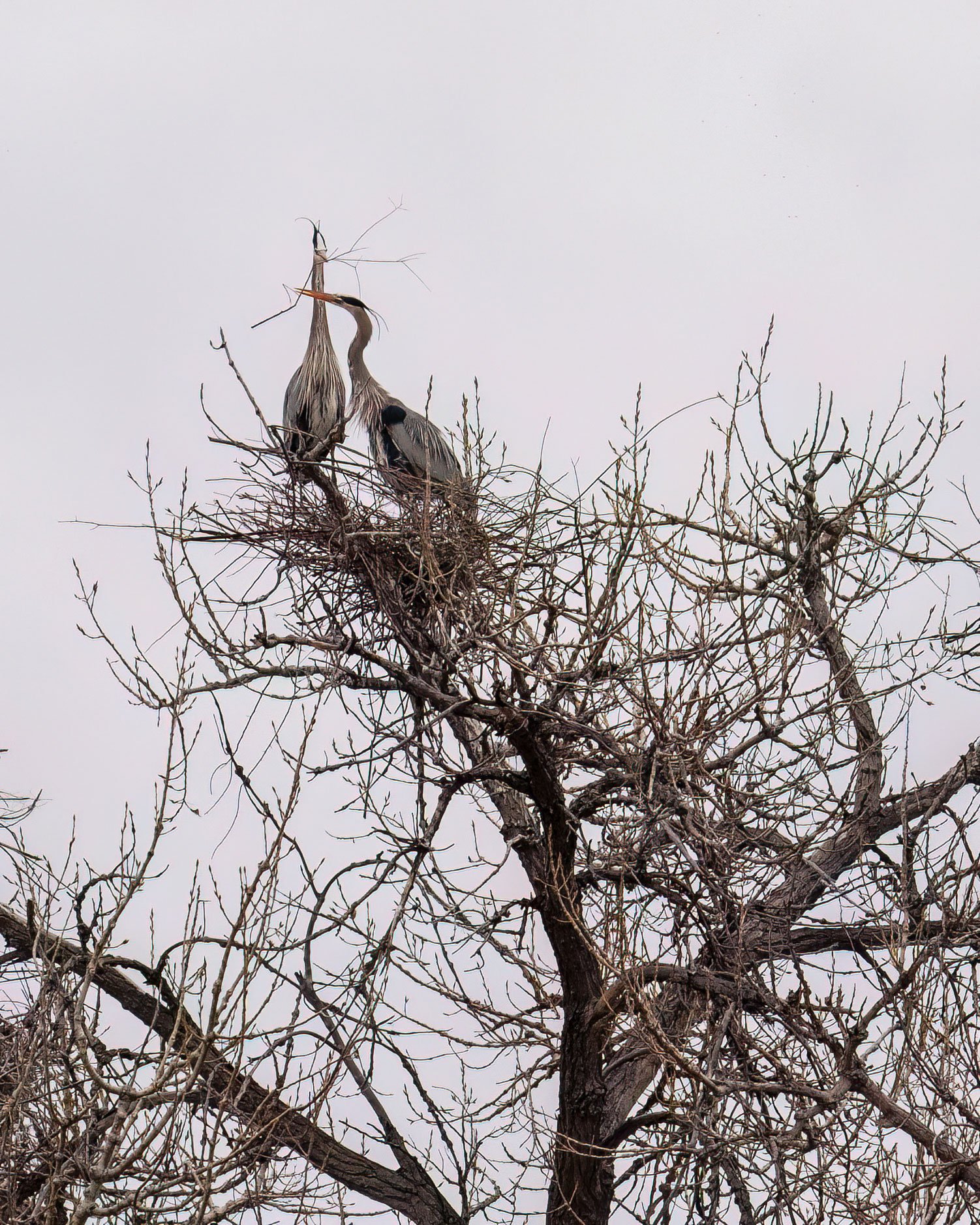Blue Herons: Nest Building, Comings and Goings, Courtship Rituals, Plumes, and Beavers
The natural areas of Fort Collins are hotspots of bird activity in the spring. Cattail Chorus Natural Area has a colony of blue herons in the surrounding cottonwood trees that are entertaining to watch. While I was there, I observed them coming and going building their nests, courtship rituals, their fancy plumes bobbing in the air along with their gawky bodies, and even a beaver swimming in the pond.
Nest Building
The male blue herons gather the sticks and twigs needed from the ground before returning to the nest tree and handing over the sticks to their lady loves. The female blue herons are responsible for building and tending the nest.
Comings and Goings
If you spend any time at a blue heron colony you will notice its a hubbub of activity. Between feeding themselves and building their nest there isn’t much time for anything else.
Courtship Rituals
Elaborate courtship rituals are on full display at this blue heron colony. Herons have ritualized greetings, stick transfers and a nest relief ceremony where they erect their plumes and clapper their bill tips. (All about birds)
Plumes
Blue herons have three different types of plumes or feathers. The black plumes on the top of their head are called occipital plumes. The soft lighter plumes on the sides of the wings are scapular plumes. The wispy plumes at the bottom of their S curved neck are pectoral plumes. You can see the occipital plume on the male heron below is erect as he gives the female his stick for the nest. To read more about blue heron plumes follow this link.
Beaver
It seems like a given, but I’ll mention that there happened to be a pond below these heron colonies. As I was starting to leave, I saw this little beaver swimming in the water. It was late morning so I was a bit surprised to see him.
I was lucky to snap a closeup before he disappeared below the water surface.
You never know what you are going to see when you head out. Most days that feel like nothing special often turn out to be unique. Having the opportunity to watch the herons nest building and then to see a beaver was truly spectacular. I can’t wait for my next adventure!














